History

 These days, people can buy a ticket to ride a train and have a private room with a bed and bathroom in it to make their trip more comfortable. Since I have taken a train trip from Seattle, Washington to Chicago, Illinois, I can tell you that paying the extra money for that private cabin is really a good idea. We traveled in in a seat among the other passengers, and while the seat was pretty comfortable, it was not comfortable to sleep in. My parents traveled on the Amtrack too, and they did get a private cabin, so their experience was probably much better than mine, although I loved the trip…just not the sleeping part of it. Of course, even with the comfort my parents had on
These days, people can buy a ticket to ride a train and have a private room with a bed and bathroom in it to make their trip more comfortable. Since I have taken a train trip from Seattle, Washington to Chicago, Illinois, I can tell you that paying the extra money for that private cabin is really a good idea. We traveled in in a seat among the other passengers, and while the seat was pretty comfortable, it was not comfortable to sleep in. My parents traveled on the Amtrack too, and they did get a private cabin, so their experience was probably much better than mine, although I loved the trip…just not the sleeping part of it. Of course, even with the comfort my parents had on 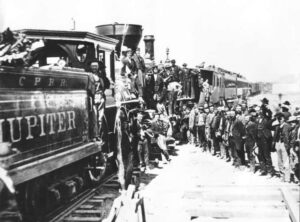 their trip, it was nothing compared to the Gilded Age, when the very rich had their own car on the train.
their trip, it was nothing compared to the Gilded Age, when the very rich had their own car on the train.
The Gilded Age was a time when the very rich went to great lengths to let all of the “less fortunate ones” know that they had wealth. The Gilded Age took place mostly from 1887 to 1900, with some earlier exceptions. One of the main objectives of life during the Gilded Age, if one could afford it, was to see and be seen in the most luxurious ways possible, and the railway was no different. Commercial air travel didn’t exist then, and cars were very slow. So, when the nation came into the age of the rails, the wealthy made sure that extreme luxury there was no exception. By the 1870s, private railroad cars…some extravagantly decorated…were the most fashionable way to travel. I suppose it would have been like the very 
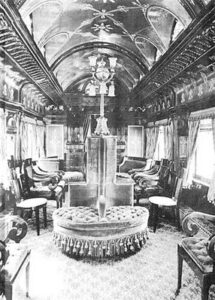 rich on ships, but they could stay a little closer to home, and still travel. The people would never travel in humble wooden coach seats, which I can understand, but most people had no other choice. Money bought comfort.
rich on ships, but they could stay a little closer to home, and still travel. The people would never travel in humble wooden coach seats, which I can understand, but most people had no other choice. Money bought comfort.
With great fanfare, the very rich boarded their own entire rail cars, where the walls were lined in velvet, the upholstery plush, and the decor much like that of a fancy parlor at home. The private cars had bedrooms, running water, and a private water closet. Now expense was spared to make sure that the wealthy car owner was never out of the lap of luxury. It seems like a cruel way to act, but I suppose it is simply the way it is.
 World War II was coming to a close and everyone was just doing whatever they could to stay alive. Staff Sergeant Henry E “Red” Erwin Sr was the radio operator on a B-29 Superfortress bomber, piloted by Captain George A “Tony” Simeral. Formed at Dalhart, Texas, in June 1944, and deployed overseas in January 1945, this was a seasoned crew. Erwin’s unit was the 52nd Bombardment Squadron, 29th Bombardment Wing, and Erwin’s B-29 was one of the few planes in Major General Curtis E LeMay’s XXI Bomber Command to have two names. The B-29, serial number 42-65302, was called Snatch Blatch and The City of Los Angeles. On April 12, 1945, the crew was on a bombing mission over Japan. They were part of a campaign to bomb Tokyo and other major Japanese cities.
World War II was coming to a close and everyone was just doing whatever they could to stay alive. Staff Sergeant Henry E “Red” Erwin Sr was the radio operator on a B-29 Superfortress bomber, piloted by Captain George A “Tony” Simeral. Formed at Dalhart, Texas, in June 1944, and deployed overseas in January 1945, this was a seasoned crew. Erwin’s unit was the 52nd Bombardment Squadron, 29th Bombardment Wing, and Erwin’s B-29 was one of the few planes in Major General Curtis E LeMay’s XXI Bomber Command to have two names. The B-29, serial number 42-65302, was called Snatch Blatch and The City of Los Angeles. On April 12, 1945, the crew was on a bombing mission over Japan. They were part of a campaign to bomb Tokyo and other major Japanese cities.
Each of the 12 crew members on the B-29 had additional duties to perform, along with their primary jobs. Erwin’s was to drop phosphorus smoke bombs through a chute in the aircraft’s floor when the lead plane reached a designated assembly area. During the campaign, Erwin pulled the pin and released a bomb into the chute, but the fuse malfunctioned and ignited the phosphorus prematurely, burning at 1,100 degrees. The canister flew back up the chute and into Erwin’s face, blinding him, searing off one ear and obliterating his nose. Phosphorus pentoxide smoke immediately filled the aircraft. It was impossible for the pilot to see his instrument panel. At such a high heat, Erwin was afraid the bomb would burn through the metal floor into the bomb bay. Nevertheless, Erwin had a quick, fleeting chance to save the lives of his fellow crewmembers by risking severe, probably fatal, burns to his own body, and he knew he had to act. He was completely blind, and yet he picked up the flare and feeling his way, crawled around the gun turret and headed for the copilot’s window. His face and arms were covered with ignited phosphorus and his path was blocked by the navigator’s folding table, hinged to the wall but down and locked. By now the navigator was setting up to make a sighting. The table’s latches could not be released with one hand, so Erwin held the white-hot bomb between his bare right arm and 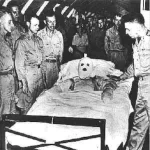 his ribcage. It only took a few seconds to raise the table, but by then, the phosphorus had burned through his flesh to the bone. His body on fire, he stumbled into the cockpit, threw the bomb out the window and collapsed between the pilot’s seats, and with that heroic act, the rest of the crew was saved.
his ribcage. It only took a few seconds to raise the table, but by then, the phosphorus had burned through his flesh to the bone. His body on fire, he stumbled into the cockpit, threw the bomb out the window and collapsed between the pilot’s seats, and with that heroic act, the rest of the crew was saved.
It was the moment of truth for Erwin, who was a modest, humble kind of guy. His thoughts on his heroic actions would have been something along the lines of, “I just did what any soldier would have done…it’s nothing special,” but the truth is, it was something very special and very heroic. Red Erwin came to the war zone as one of thousands of B-29 crewmembers placed in the North Pacific, on the Marianas islands of Guam, Saipan, and Tinian for the purpose of attacking Japan. The American taxpayer had equipped them with the largest and costliest aircraft of the war, the first large combat plane to be pressurized, enabling the crew to dispense with heated clothing and oxygen masks and to work in shirtsleeves, a fact that also put Erwin in an even more vulnerable position, because his skin was less protected than it would have been in a coat.
Erwin survived his burns. He was flown back to the United States, and after 30 months and 41 surgeries, his eyesight was restored, and he regained use of one arm. He received a disability discharge as a master sergeant in October 1947. In addition to the Medal of Honor and two Air Medals received earlier in 1945, he was also awarded the Purple Heart, the World War II Victory Medal, the American Campaign Medal, three Good Conduct Medals, the Asiatic-Pacific Campaign Medal with two bronze campaign stars (for participation in the Air 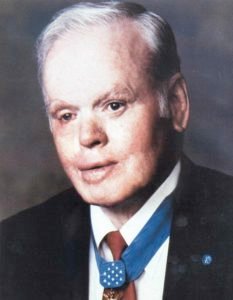 Offensive Japan and Western Pacific campaigns), and the Distinguished Unit Citation Emblem. He was a remarkable soldier.
Offensive Japan and Western Pacific campaigns), and the Distinguished Unit Citation Emblem. He was a remarkable soldier.
For 37 years, Erwin served as a benefits counselor at the veterans’ hospital in Birmingham, Alabama. In 1997, the Air Force created the Henry E Erwin Outstanding Enlisted Aircrew Member of the Year Award. It is presented annually to an airman, noncommissioned officer and senior noncommissioned officer in the flight engineering, loadmaster, air surveillance and related career fields. It is only the second Air Force award named for an enlisted person. Henry Erwin, despite his scars and wounds, went on to lead a typical life… marrying, raising children, and becoming a grandfather. But there was nothing “typical” about Red Erwin. “Red” Erwin died at his home on January 16, 2002, and was buried at Elmwood Cemetery in Birmingham, Alabama. His son, Hank Erwin, became an Alabama state senator.

 Some books should have a permanent copyright, and it seems like insanity to me that they don’t. As copyright laws go, a work is typically protected for 70 years after the creator’s death. That would mean that a book like Anne Frank’s diary, the copyrights would expire in 2015 because of her untimely death in a concentration camp, and the book would become public domain. It seems very wrong that her diary…her own private words…could become public domain. A diary is so private, but then I guess that when they published her diary, any semblance of privacy no longer existed.
Some books should have a permanent copyright, and it seems like insanity to me that they don’t. As copyright laws go, a work is typically protected for 70 years after the creator’s death. That would mean that a book like Anne Frank’s diary, the copyrights would expire in 2015 because of her untimely death in a concentration camp, and the book would become public domain. It seems very wrong that her diary…her own private words…could become public domain. A diary is so private, but then I guess that when they published her diary, any semblance of privacy no longer existed.
Anne Frank’s diary, the story of which abruptly ended when the family that was secretly hiding them was betrayed, and the two families they were hiding, captured, was preserved after their capture, and given to Otto Frank after he survived the Holocaust. After much soul searching, Otto Frank decided to publish his younger daughter’s story, because people needed to know the truth. It was a selfless move that must have been heartbreaking for a man who had lost everything in the Holocaust…a man whose daughters would never grow to adulthood, never marry, never have children, never grow old. The book became the only way to extend Anne’s life, and through her words to also extend the lives of her mother, sister, and the others who were in hiding. As such, it seems only fitting that the work continue as a copyrighted work beyond 2015, but the law was the law…or was it?
The Swiss foundation, that holds the copyright, made a move to extend the protection of the book. It was a bold, yet simple move. They made Anne’s father, Otto Frank co-author of the book. Of course, a move like this must hold some merit as well. Otto could not be named co-author just because he was her father. While The Diary of Anne Frank was compiled of journal entries made by Anne, it was her father who read through her journal to put together the final product. Otto admitted to having censored some of the content, leaving out 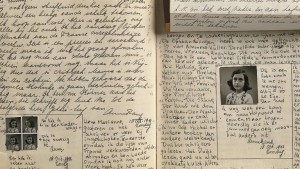
 certain parts of her story that he decided were unsavory or too personal. It made sense. After all, this was his daughter, and she was becoming a woman, with the curiosities of that transition. His work in editing her story gave credence to naming him co-author. Otto survived World War II and didn’t pass away until 1980. That now means that the copyright could be pushed back to 2050, as he was officially deemed co-author.
certain parts of her story that he decided were unsavory or too personal. It made sense. After all, this was his daughter, and she was becoming a woman, with the curiosities of that transition. His work in editing her story gave credence to naming him co-author. Otto survived World War II and didn’t pass away until 1980. That now means that the copyright could be pushed back to 2050, as he was officially deemed co-author.
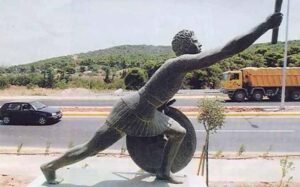 When we think of runners, most of us are impress, and rightly so. To run a race…especially a marathon…is an amazing feat. A marathon is 26.2 miles, but do you know why that is? Supposedly, the length of the race is a “tip of the hat” to a man named Pheidippides. According to legend, Pheidippides, an Athenian soldier, witnessed the combined Athenian and Spartan army’s victory over the Persians at Marathon. Then he supposedly ran 26 miles to Athens to deliver the news. When he arrived, he informed the Athenians, and then promptly perished of exhaustion. In his honor, marathon runners run 26.2 miles to remember that amazing feat, hoping not to share his fate in doing so. Another legend claims that the extra 0.2 miles were added during the 1908 Olympics so the race would end in front of Princess Mary’s pavilion. I’m not sure about the addition of the 0.2 miles, but the reality is that Pheidippides ran a lot further than 26 miles in his “death run” to spread the news of victory.
When we think of runners, most of us are impress, and rightly so. To run a race…especially a marathon…is an amazing feat. A marathon is 26.2 miles, but do you know why that is? Supposedly, the length of the race is a “tip of the hat” to a man named Pheidippides. According to legend, Pheidippides, an Athenian soldier, witnessed the combined Athenian and Spartan army’s victory over the Persians at Marathon. Then he supposedly ran 26 miles to Athens to deliver the news. When he arrived, he informed the Athenians, and then promptly perished of exhaustion. In his honor, marathon runners run 26.2 miles to remember that amazing feat, hoping not to share his fate in doing so. Another legend claims that the extra 0.2 miles were added during the 1908 Olympics so the race would end in front of Princess Mary’s pavilion. I’m not sure about the addition of the 0.2 miles, but the reality is that Pheidippides ran a lot further than 26 miles in his “death run” to spread the news of victory.
For that reason, the real Pheidippides probably wouldn’t have been impressed with someone who ran just 26.2 miles. That would have been child’s play to him. In reality, Pheidippides ran about 300 miles over the course of two days. It’s no wonder he passed away from exhaustion at the end of such a run. Pheidippides was a hemerodromos, or a military long-distance runner. Basically, he was a courier, but these days couriers use a  bicycle or car to carry their messages. Nevertheless, in ancient times, runners were the most efficient way to transmit messages over long distances, but Pheidippides’s legendary run was much, much longer than the average run. In fact, it was a “death run.”
bicycle or car to carry their messages. Nevertheless, in ancient times, runners were the most efficient way to transmit messages over long distances, but Pheidippides’s legendary run was much, much longer than the average run. In fact, it was a “death run.”
The actual task assigned to Pheidippides was to run from Athens to Sparta to ask for more soldiers to be sent. It was a task he carried out, and the Spartans agreed. However, they refused to fight until there was a full moon, as was their battle custom. That was six days away, and would be of no help, since the loss of life by then would be too great. So, Pheidippides turned around and ran back to Athens to inform his superiors of the delay. It reportedly took him two days to cover 300 miles, and it was at the end of this run that Pheidippides expired.
Supposedly, it was a different runner entirely who ran from Marathon to Athens to deliver the news about the victory. While remaining anonymous, this runner apparently still perished at the end of his journey, which is why his shorter run is still remembered. I suppose that does make the marathon a treacherous and dangerous race. Over time, Pheidippides’s ultra-marathon was combined with the anonymous runner’s feat. Maybe they thought it was impossible for a man to run 300 miles in two days, and since I’m not runner, I really couldn’t  say. For me, while I can and have regularly walked 10 to 15 miles in a day, to run even a mile would be a likely impossibility, so I have great respect for anyone who runs any distance, much less a marathon or even a half-marathon. I am not surprised that these men died at the end of their runs. Quite possibly, their water and even food supply was somewhat limited during their runs, and since I know how tired I am after walking 10 to 15 miles, I can almost imagine the exhaustion after running a marathon or half-marathon, but to run 300 miles over two days, well suffice it to say I would have dropped before the first day ended…which is probably why I don’t run…unless it is to get away from danger, hahaha!!
say. For me, while I can and have regularly walked 10 to 15 miles in a day, to run even a mile would be a likely impossibility, so I have great respect for anyone who runs any distance, much less a marathon or even a half-marathon. I am not surprised that these men died at the end of their runs. Quite possibly, their water and even food supply was somewhat limited during their runs, and since I know how tired I am after walking 10 to 15 miles, I can almost imagine the exhaustion after running a marathon or half-marathon, but to run 300 miles over two days, well suffice it to say I would have dropped before the first day ended…which is probably why I don’t run…unless it is to get away from danger, hahaha!!
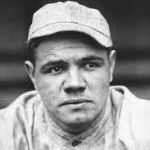
 When Babe Ruth set his home run record in 1935, and because the record lasted for so many years, many people thought it would never be broken. That idea was shattered on April 8, 1974, when Hank Aaron of the Atlanta Braves hits his 715th career home run, breaking Babe Ruth’s legendary record of 714 homers. The game was also broadcast nationally on NBC. It was the end of an era, and many people were sad to see it happen. There was discussion that it shouldn’t count, because of the difference in bats in the 70s, as opposed to the 30s. I wasn’t a big baseball fan in those days, but I remember the argument. I’m sure there was some validity in it, but the fact that the equipment had changed was not something anyone could help. The rules allowed the newer bats, and that was that.
When Babe Ruth set his home run record in 1935, and because the record lasted for so many years, many people thought it would never be broken. That idea was shattered on April 8, 1974, when Hank Aaron of the Atlanta Braves hits his 715th career home run, breaking Babe Ruth’s legendary record of 714 homers. The game was also broadcast nationally on NBC. It was the end of an era, and many people were sad to see it happen. There was discussion that it shouldn’t count, because of the difference in bats in the 70s, as opposed to the 30s. I wasn’t a big baseball fan in those days, but I remember the argument. I’m sure there was some validity in it, but the fact that the equipment had changed was not something anyone could help. The rules allowed the newer bats, and that was that.
Hank Aaron broke Babe Ruth’s record in front of a crowd of 53,775 people, the largest in the history of Atlanta-Fulton County Stadium. They all knew he was close, and no one wanted to miss that all-important 715th homerun. The record-breaking hit came in a 4th inning pitch off the Los Angeles Dodgers’ Al Downing. However, because Aaron, an African American, had received death threats and racist hate mail during his pursuit of one of baseball’s most distinguished records, the achievement, for him, was bittersweet.
Henry Louis Aaron Jr was born in Mobile, Alabama, on February 5, 1934. He made his Major League debut in 1954 with the Milwaukee Braves. That, in and of itself was an accomplishment, because just eight years earlier, it would not have been allowed. Then, Jackie Robinson broke baseball’s color barrier and became the first African American to play in the majors in 1947. That opened the door for Aaron, a hardworking and quiet man. He was to be the last “Negro League” player to also compete in the Major Leagues. In 1957, Aaron, who played right field, was named the National League’s Most Valuable Player as the Milwaukee Braves won the pennant. A few weeks later, his three home runs in the World Series helped his team in their win over the heavily favored New York Yankees. Although “Hammerin’ Hank” specialized in home runs, he was also an extremely dependable batter, and by the end of his career he held baseball’s career record for most runs batted in…2,297. His career lasted for 23 years. He was with the Braves from 1954 to 1974…first in Milwaukee and then in Atlanta, when the franchise moved in 1966…and closed it out with two seasons back in Milwaukee for the Brewers.
When he retired in 1976, Aaron had 755 career home runs to his credit…a record that stood until 2007, when it was broken by controversial slugger Barry Bonds (Bonds admitted to using steroids in 2011). Bonds career homeruns ended at 762, but many people think he should be stripped of the record for the illegal steroid use. 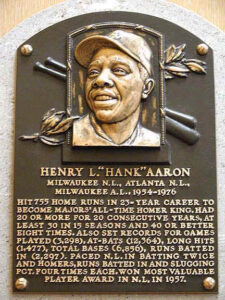
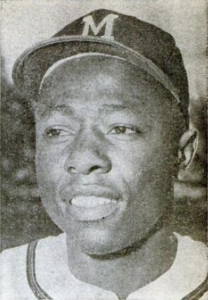 Nevertheless, Bonds baseball career was over. Hank Aaron’s achievements didn’t end when his career did, though. He went on to become one of baseball’s first African American executives, with the Atlanta Braves, and a leading spokesperson for minority hiring. Hank Aaron was inducted into the Baseball Hall of Fame in 1982. On January 5, 2021, Aaron publicly received a COVID-19 vaccination with the Moderna COVID-19 vaccine at the Morehouse School of Medicine at Atlanta, Georgia. Aaron died in his sleep in his Atlanta residence on January 22 at the age of 86. While the manner of death was listed as natural causes, anti-vaccine activists Robert F Kennedy Jr and Del Bigtree have suggested that Aaron’s death was caused by receiving the COVID-19 vaccine. I suppose we will never know.
Nevertheless, Bonds baseball career was over. Hank Aaron’s achievements didn’t end when his career did, though. He went on to become one of baseball’s first African American executives, with the Atlanta Braves, and a leading spokesperson for minority hiring. Hank Aaron was inducted into the Baseball Hall of Fame in 1982. On January 5, 2021, Aaron publicly received a COVID-19 vaccination with the Moderna COVID-19 vaccine at the Morehouse School of Medicine at Atlanta, Georgia. Aaron died in his sleep in his Atlanta residence on January 22 at the age of 86. While the manner of death was listed as natural causes, anti-vaccine activists Robert F Kennedy Jr and Del Bigtree have suggested that Aaron’s death was caused by receiving the COVID-19 vaccine. I suppose we will never know.
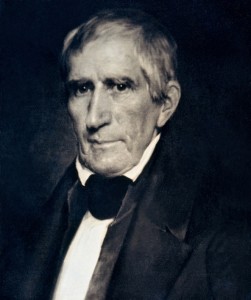
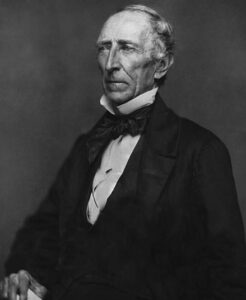 President William Harrison has the distinct record of having the shortest term in office in the history of the United States…exactly one month…from March 4, 1841 to April 4, 1841. His death and the immediate swearing in of his vice president, John Tyler on April 6, 1841, made Tyler the first vice president to immediately assume the role of president after a sitting president’s untimely exit and set the precedent for succession thereafter. It is thought that his illness was caused by the bad weather at his inauguration three weeks earlier, however, on Wednesday, March 24, 1841, Harrison took his daily morning walk to local markets, without a coat or hat. Despite being caught in a sudden rainstorm, he did not change his wet clothes upon return to the White House. He first fell ill with cold-like symptoms on Friday, March 26. His aids sent for his doctor, Thomas Miller. Harrison told the doctor he felt better after having taken medication for “fatigue and mental anxiety.” He might well have recovered from the cold, flu, or pneumonia that he was sick with at first, but to further complicate matters, Miller’s notes and records, found that the White House water supply was downstream of public sewage. With that newly revealed information, the conclusion now is that he likely died of septic shock due to “enteric fever” (typhoid or paratyphoid fever).
President William Harrison has the distinct record of having the shortest term in office in the history of the United States…exactly one month…from March 4, 1841 to April 4, 1841. His death and the immediate swearing in of his vice president, John Tyler on April 6, 1841, made Tyler the first vice president to immediately assume the role of president after a sitting president’s untimely exit and set the precedent for succession thereafter. It is thought that his illness was caused by the bad weather at his inauguration three weeks earlier, however, on Wednesday, March 24, 1841, Harrison took his daily morning walk to local markets, without a coat or hat. Despite being caught in a sudden rainstorm, he did not change his wet clothes upon return to the White House. He first fell ill with cold-like symptoms on Friday, March 26. His aids sent for his doctor, Thomas Miller. Harrison told the doctor he felt better after having taken medication for “fatigue and mental anxiety.” He might well have recovered from the cold, flu, or pneumonia that he was sick with at first, but to further complicate matters, Miller’s notes and records, found that the White House water supply was downstream of public sewage. With that newly revealed information, the conclusion now is that he likely died of septic shock due to “enteric fever” (typhoid or paratyphoid fever).
When Tyler took over, not everyone was happy about it. Tyler was a loyal supporter and advocate of states’ rights, including regarding slavery, and he adopted nationalistic policies as president only when they did not infringe on the powers of the states. His unexpected rise to the presidency posed a threat to the presidential ambitions of Henry Clay and other Whig politicians, and left Tyler estranged from both of the nation’s major political parties at the time. It was quite a predicament. When Tyler vetoed his fellow Whigs’ attempt to reestablish the National Bank, most of his cabinet resigned and he was thrown out of the Whig Party. What a 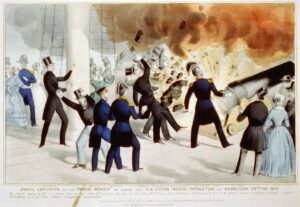 shock that must have been!! Tyler had already lost the support of the Democrats by denouncing Andrew Jackson’s policies as well, so Tyler became a president without a party. He began receiving death threats from both sides and quickly earned the enmity of Congress. His four years in office were chaotic. Nevertheless, he is credited with settling Canadian border disputes with Britain and beginning the annexation of Texas. Obviously, Tyler did not win a second term.
shock that must have been!! Tyler had already lost the support of the Democrats by denouncing Andrew Jackson’s policies as well, so Tyler became a president without a party. He began receiving death threats from both sides and quickly earned the enmity of Congress. His four years in office were chaotic. Nevertheless, he is credited with settling Canadian border disputes with Britain and beginning the annexation of Texas. Obviously, Tyler did not win a second term.
In 1844, during a cruise down the Potomac aboard the newly commissioned steam frigate USS Princeton, Tyler himself narrowly escaped death when the ships state-of-the-art cannon, called the Peacemaker, exploded as the crew fired a celebratory salute. The accident killed several people aboard, including two members of Tyler’s cabinet and his future wife’s father. Tyler was married twice. His first wife, Letitia Christian passed away in 1842, and he married Julia Gardiner in 1844. Between his two marriages, Tyler produced 15 children. Tyler’s unexpected ascendance to the presidency and the near-miss aboard the Princeton earned him the nickname of His Accidency.
After leaving the White House, Tyler retired to a Virginia plantation, originally named Walnut Grove (or “the Grove”), located on the James River in Charles City County. He renamed it Sherwood Forest, in a reference to the folk legend Robin Hood, to signify that he had been “outlawed” by the Whig Party. Tyler tried to broker a peace convention between the North and South on the eve of the Civil War, but he failed to reach an agreement with Abraham Lincoln on key issues. Denounced as a traitor by the North, Tyler fell in line with southern secessionists and, in 1861, was elected to the Confederate House of Representatives. Tyler suffered from poor health throughout his life. He was susceptible to colds and that got worse as he got older. On January 12, 1862, 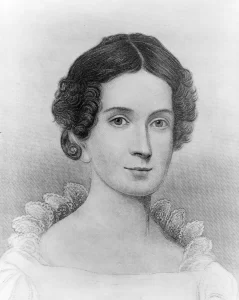
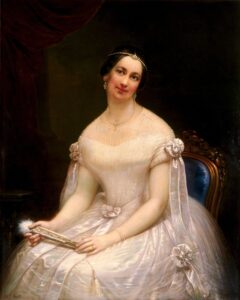 after complaining of chills and dizziness, he vomited and collapsed. Despite treatment, his health failed to improve, and he made plans to return to Sherwood Forest by the 18th. As he lay in bed the night before, he began suffocating, and Julia summoned his doctor. Just after midnight, Tyler took a sip of brandy, and told his doctor, “Doctor, I am going”, to which the doctor replied, “I hope not, Sir.” Tyler then said, “Perhaps it is best.” He died shortly thereafter, most likely due to a stroke. He was 71. His death occurred on January 18, 1862. Tyler’s death was the only one in presidential history not to be officially recognized in Washington, because by then, his allegiance was to the Confederate States of America.
after complaining of chills and dizziness, he vomited and collapsed. Despite treatment, his health failed to improve, and he made plans to return to Sherwood Forest by the 18th. As he lay in bed the night before, he began suffocating, and Julia summoned his doctor. Just after midnight, Tyler took a sip of brandy, and told his doctor, “Doctor, I am going”, to which the doctor replied, “I hope not, Sir.” Tyler then said, “Perhaps it is best.” He died shortly thereafter, most likely due to a stroke. He was 71. His death occurred on January 18, 1862. Tyler’s death was the only one in presidential history not to be officially recognized in Washington, because by then, his allegiance was to the Confederate States of America.

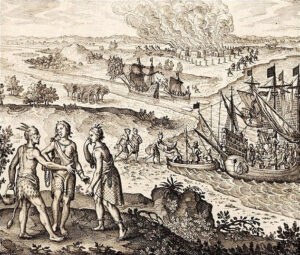 In May 1607, about 100 English colonists settled along the James River in Virginia to found Jamestown, which became the first permanent English settlement in America. Things were not going well for the settlers because of famine, disease, and Native American attacks. Then, 27-year-old English adventurer John Smith, began to directed survival efforts and mapped the area. Smith was exploring the Chickahominy River in December 1607 along with two colonists, when they were captured by Powhatan warriors. At the time, the Powhatan confederacy consisted of around 30 Tidewater-area tribes led by Chief Wahunsonacock, known as Chief Powhatan to the English. In the attack, Smith’s companions were killed, but he was spared and released. The reason, according to a 1624 account by Smith, was because of the dramatic intercession of Pocahontas, Chief Powhatan’s 13-year-old daughter. Pocahontas either had an aversion to the attacks that her people carried out on the settlers, or she could see the writing on the wall where the settlers were concerned, and knew that they would not leave, but would rather begin to cause great hardship on the tribes, because of the attacks. Her real name was Matoaka, but she was given the nickname, Pocahontas, by her father. It is a name that has been translated variously as “playful one” and “my favorite daughter.” In 1608, Smith was made president of the Jamestown colony, but that did not improve matters to a great degree, and the settlement continued to suffer. An accidental fire destroyed much of the town, and hunger, disease, and the Indian attacks continued. Things were not looking good for the settlers. Pocahontas did what she could to ease the situation, often coming to Jamestown as an ambassador of her father. Sometimes Pocahontas came bearing gifts of food to help the starving settlers. She became a friend of the settlers and soon became acquainted with English ways. Unfortunately, Smith was injured from a fire in his gunpowder bag and was forced to return to England in 1609.
In May 1607, about 100 English colonists settled along the James River in Virginia to found Jamestown, which became the first permanent English settlement in America. Things were not going well for the settlers because of famine, disease, and Native American attacks. Then, 27-year-old English adventurer John Smith, began to directed survival efforts and mapped the area. Smith was exploring the Chickahominy River in December 1607 along with two colonists, when they were captured by Powhatan warriors. At the time, the Powhatan confederacy consisted of around 30 Tidewater-area tribes led by Chief Wahunsonacock, known as Chief Powhatan to the English. In the attack, Smith’s companions were killed, but he was spared and released. The reason, according to a 1624 account by Smith, was because of the dramatic intercession of Pocahontas, Chief Powhatan’s 13-year-old daughter. Pocahontas either had an aversion to the attacks that her people carried out on the settlers, or she could see the writing on the wall where the settlers were concerned, and knew that they would not leave, but would rather begin to cause great hardship on the tribes, because of the attacks. Her real name was Matoaka, but she was given the nickname, Pocahontas, by her father. It is a name that has been translated variously as “playful one” and “my favorite daughter.” In 1608, Smith was made president of the Jamestown colony, but that did not improve matters to a great degree, and the settlement continued to suffer. An accidental fire destroyed much of the town, and hunger, disease, and the Indian attacks continued. Things were not looking good for the settlers. Pocahontas did what she could to ease the situation, often coming to Jamestown as an ambassador of her father. Sometimes Pocahontas came bearing gifts of food to help the starving settlers. She became a friend of the settlers and soon became acquainted with English ways. Unfortunately, Smith was injured from a fire in his gunpowder bag and was forced to return to England in 1609.
With Smith no longer in charge, relations with the Powhatan deteriorated. The attacks continued, and many settlers died from famine and disease in the winter of 1609-10. The settlers were about to give up and go back to England…thereby abandoning Jamestown, when Baron De La Warr (also known as Delaware) arrived in June 1610 with new supplies. It was just in time, and the settlers began to rebuild the settlement. The Delaware River and the colony of Delaware were later named after Baron De La Warr. John Rolfe also arrived in Jamestown in 1610 and two years later cultivated the first tobacco there, introducing a successful source of livelihood that would have far-reaching importance for Virginia.
Still, things were far from perfect in the rea. In the spring of 1613, English Captain Samuel Argall took Pocahontas hostage, hoping to use her to negotiate a permanent peace with her father. Seriously, kidnapping a man’s daughter is hardly the way to make peace. Pocahontas was taken to Jamestown, where she was put under the custody of Sir Thomas Gates, the marshal of Virginia. The good news was that Gates treated her as a guest rather than a prisoner and encouraged her to learn English customs. She converted to Christianity and was baptized Lady Rebecca. After much trepidation, Powhatan agreed to the terms for her release, but by then she had fallen in love with John Rolfe, who was about 10 years her senior. On April 5, 1614, Pocahontas and John Rolfe married with the blessing of Chief Powhatan and the governor of Virginia. In this case, what might have been viewed as a marriage of convenience, was actually one of love…and of convenience. Their marriage brought a peace between the English colonists and the Powhatans, and in 1615 Pocahontas gave birth to their first child, Thomas. In 1616, the couple sailed to England. Dubbed the Indian Princess, Pocahontas proved popular with the English gentry, and she was presented at the court of King James I.
In March 1617, as Pocahontas and Rolfe were preparing to sail back to Virginia…in fact, the day before they 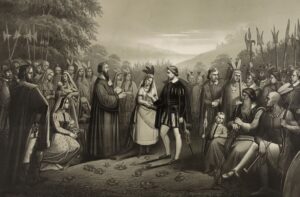
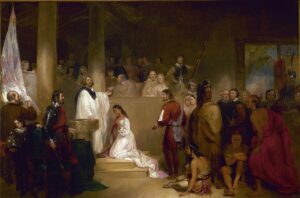 were to leave, Pocahontas died of smallpox. I’m sure Rolfe wished he had never brought her to England. She was buried at the parish church of Saint George in Gravesend, England. John Rolfe returned to Virginia and was killed in a Native American massacre in 1622. After an education in England, their son Thomas Rolfe returned to Virginia and became a prominent citizen.
were to leave, Pocahontas died of smallpox. I’m sure Rolfe wished he had never brought her to England. She was buried at the parish church of Saint George in Gravesend, England. John Rolfe returned to Virginia and was killed in a Native American massacre in 1622. After an education in England, their son Thomas Rolfe returned to Virginia and became a prominent citizen.
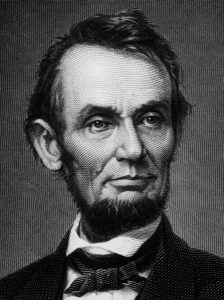
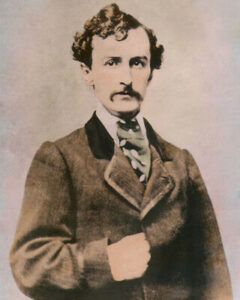 People are free to call it whatever they want to, but I prefer to follow the Biblical version, in which Joseph was warned in a dream, to move his son, Jesus to Egypt, because the Pharaoh was looking for Him so he could kill Him. Joseph heeded the warning. and the family moved immediately…like in the middle of the night, while those who were a danger to him were sleeping. Thankfully Joseph heeded that dream. Just imagine our world if he had not.
People are free to call it whatever they want to, but I prefer to follow the Biblical version, in which Joseph was warned in a dream, to move his son, Jesus to Egypt, because the Pharaoh was looking for Him so he could kill Him. Joseph heeded the warning. and the family moved immediately…like in the middle of the night, while those who were a danger to him were sleeping. Thankfully Joseph heeded that dream. Just imagine our world if he had not.
There have been other people who have had dream warnings, or prophetic dreams, whether a warning or a great blessing that was coming their way. I believe that our dreams can be a matter of God talking to us. President Abraham Lincoln was one of those people who had a prophetic dream, and it has been well documented through the years, for those of us who have chosen to listen. President Lincoln had his dream on April 4, 1865, and the dream was so troubling that he actually told it to a number of people including his wife, Mary Todd Lincoln and his former law partner, Ward Hill Lamon on April 11, 1865.
According to Lamon’s recollection, President Abraham Lincoln dreams on this night in 1865 “of ‘the subdued sobs of mourners’ and a corpse lying on a catafalque in the White House East Room.” In the dream, Lincoln asked a soldier standing guard “Who is dead in the White House?” to which the soldier replied, “the President. He was killed by an assassin.” Lincoln woke up at that point. On April 11, he told Lamon that the dream had “strangely annoyed” him ever since. Ten days after having the dream, Lincoln was shot dead by an assassin while attending the theater. Abraham Lincoln was shot by John Wilkes Booth while attending a play at Ford’s Theater in Washington DC on April 14, 1865. His assassination was the only successful leg in a conspiracy that also intended on capturing or killing Vice President Andrew Johnson and Secretary of State William Seward.
Interestingly, Lincoln supposedly later insisted to Lamon that the body on display was not his own…so he, himself did not view the dream as a warning of his own death. Some historians have discounted Lamon’s account, which was first published in the 1880s, nearly 20 years after the assassination. Nevertheless, Lamon claimed to have reconstructed the incident based on notes he made in 1865. I suppose the historians believe that since neither he nor Mary Lincoln mentioned the dream right after the president’s murder, it must not have been true. I believe that it was true, and that they were in such shock, that it never occurred to them to bring it up. Still, it is well known that Lincoln was a dreamer and was apparently quite interested in the meaning of dreams and what they have to say about future events both positive and negative. Proof of his curiosity lies in an 1863 letter to his wife, who at the time was in Philadelphia with their 10-year-old son, Tad. Lincoln writes that Mary had better “put Tad’s pistol away” as he “had an ugly dream about him.” Moreover, members of Lincoln’s cabinet recalled that, on the morning of his assassination, the president told them he’d dreamed of sailing across an unknown body of water at great speed. He also apparently revealed that he’d had the same dream repeatedly on previous occasions, before “nearly every great and important event of the War.”
The Secret Service was formed as a result of that assassination, but just imagine if they had all heeded the dream warning and placed a better guard around President Lincoln. If those he told of the dream, had considered the possibility of missing the play, or posted guards around the president, how different could have been the outcome. The world will never know, because one of our greatest presidents was gone before he could finish his second term in office. Lincoln was a very popular president. In his run against Democrat, George B 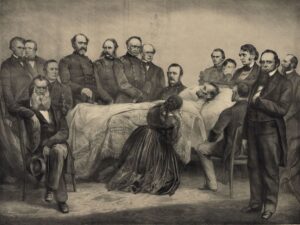
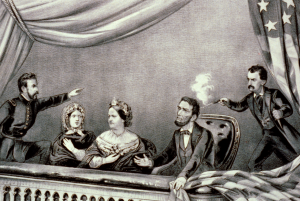 McClellan, Lincoln carried all but three states (Kentucky, New Jersey, and Delaware), and won 55 percent of the vote. He won 212 electoral votes to McClellan’s 21, which goes to show that most of the people approved of his anti-slavery policies, as opposed to the Democrats, who wanted to keep slavery, and who fought against the slaves and minority races…and still do, even to this day.
McClellan, Lincoln carried all but three states (Kentucky, New Jersey, and Delaware), and won 55 percent of the vote. He won 212 electoral votes to McClellan’s 21, which goes to show that most of the people approved of his anti-slavery policies, as opposed to the Democrats, who wanted to keep slavery, and who fought against the slaves and minority races…and still do, even to this day.
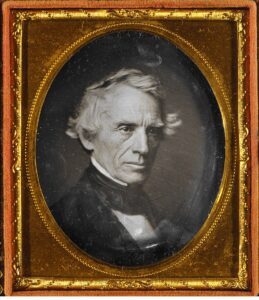 Samuel Finley Breese Morse was born on April 27, 1791, in Charlestown, Massachusetts, the first child of the pastor Jedidiah Morse (1761–1826), who was also a geographer, and his wife Elizabeth Ann Finley Breese (1766–1828). Samuel Morse was an American inventor and painter, having established his reputation as a portrait painter, but it was his work following his first wife’s death that would make his name a household word. Morse married Lucretia Pickering Walker on September 29, 1818, in Concord, New Hampshire. The couple had three children. Susan was born in 1819, Charles was born in 1823, and James was born in 1825. Shortly after giving birth to James, she died of a heart attack on February 7, 1825.
Samuel Finley Breese Morse was born on April 27, 1791, in Charlestown, Massachusetts, the first child of the pastor Jedidiah Morse (1761–1826), who was also a geographer, and his wife Elizabeth Ann Finley Breese (1766–1828). Samuel Morse was an American inventor and painter, having established his reputation as a portrait painter, but it was his work following his first wife’s death that would make his name a household word. Morse married Lucretia Pickering Walker on September 29, 1818, in Concord, New Hampshire. The couple had three children. Susan was born in 1819, Charles was born in 1823, and James was born in 1825. Shortly after giving birth to James, she died of a heart attack on February 7, 1825.
Samuel Morse was away from home, working, when he received a few letters from  his wife, Lucretia. The first letter told him that his wife was ill and the next day, while he was packing to leave, another letter arrived, informing him that she had died. Morse rushed home, but upon his arrival, was informed that she had already been buried. It was devastating, and Morse was greatly upset with the delay in his messages. He was determined to find a better way to transmit messages. Of course, nothing could be done to change the tragic loss of Lucretia, but Morse was determined to make sure this wouldn’t happen to anyone else.
his wife, Lucretia. The first letter told him that his wife was ill and the next day, while he was packing to leave, another letter arrived, informing him that she had died. Morse rushed home, but upon his arrival, was informed that she had already been buried. It was devastating, and Morse was greatly upset with the delay in his messages. He was determined to find a better way to transmit messages. Of course, nothing could be done to change the tragic loss of Lucretia, but Morse was determined to make sure this wouldn’t happen to anyone else.
Following Lucretia’s death, Morse developed Morse code and helped to develop the commercial use of telegraphy in 1833. He also contributed to the invention of a single-wire telegraph system based on European telegraphs. By creating the 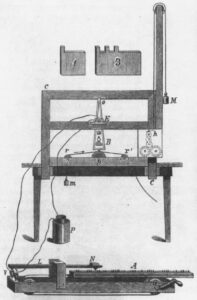 telegraph and drafting a series of dots and dashes to communicate via copper wires, 13 years after his wife died, Morse and co-developer, Charles Thomas Jackson successfully created a faster way of communicating and called it Morse Code.
telegraph and drafting a series of dots and dashes to communicate via copper wires, 13 years after his wife died, Morse and co-developer, Charles Thomas Jackson successfully created a faster way of communicating and called it Morse Code.
While Morse code was, without doubt his most important contribution to technology, his life didn’t end there. Morse did eventually find happiness again. He married his second wife, Sarah Elizabeth Griswold on August 10, 1848, in Utica, New York. The couple had four children, Samuel was born 1849, Cornelia was born in 1851, William was born in 1853, and Edward was born in 1857. Samuel Morse died in New York City on April 2, 1872. He was interred at Green-Wood Cemetery in Brooklyn, New York. By the time of his death, his estate was valued at some $500,000, which would equal about $10.8 million today.
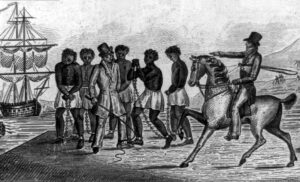
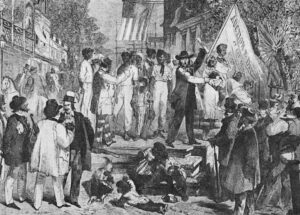 The years of slavery were awful for the African people who were sold into slavery by their own families or their countrymen. They were often stolen in the middle of the night, never to be in their homes again. Some of these slaves were young…some were even children. The terror must have been horrific. Nevertheless, it was what it was. Their life as they knew it was over. The journey to their new “home” was a hard one, and many people didn’t make it. That didn’t matter either, except in the revenue lost…they cared about that.
The years of slavery were awful for the African people who were sold into slavery by their own families or their countrymen. They were often stolen in the middle of the night, never to be in their homes again. Some of these slaves were young…some were even children. The terror must have been horrific. Nevertheless, it was what it was. Their life as they knew it was over. The journey to their new “home” was a hard one, and many people didn’t make it. That didn’t matter either, except in the revenue lost…they cared about that.
When the slaves arrived in the colonies, they didn’t have last names, or if they did, no one could really understand the last names. That didn’t matter to the slave sellers or the new master, because once sold, the slaves were given the last name of their masters, if they were given one at all. They were non-people. One must also understand that not all slaves were African. Many slaves came from Ireland too, but
I suppose it was easier to get away from their masters, because they were white too…not that they escaped, because where would they go. They were far away from their home too.
In those days, in Colonial America, slaves could win their freedom through lawsuits. I’m not sure what made them think they had a chance of winning their freedom. First of all, they had no money to get an attorney, and no attorney would have taken the case anyway. They had no way of proving their case, and what would their case have been? There was no code of conduct when it came to slaves. They could be beaten, raped, and even killed by their master. They could be overworked, under fed, and punished at will. There really was no case that could be made…as far as I can see anyway. As I said, there was a slim chance that a slave could bring a case, and even less chance that case. Nevertheless, even with that low chance of succeeding, winning in court meant 
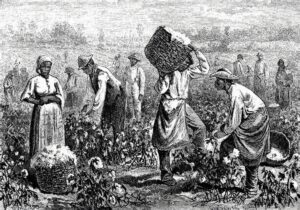 that the slave was now a citizen. They were free, and no one could dispute that again…legally anyway. The problem now was that these slaves had no last name, and they needed a last name to be a citizen. I seriously doubt they wanted to keep their master’s name. So, to solve the problem, the slaves were given the surname…Freeman. In my genealogist’s mind, there is no greater was to lose the true line of a family than such a name change.
that the slave was now a citizen. They were free, and no one could dispute that again…legally anyway. The problem now was that these slaves had no last name, and they needed a last name to be a citizen. I seriously doubt they wanted to keep their master’s name. So, to solve the problem, the slaves were given the surname…Freeman. In my genealogist’s mind, there is no greater was to lose the true line of a family than such a name change.

